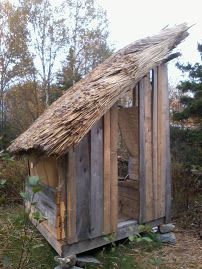Halifax Media Co-op
News from Nova Scotia's Grassroots
Defeated by Drywall: Halifax's toxic houses
Those who follow my blog will have noticed I try to offer productive solutions to the environmental problems we face, no matter how small, personal or trivial they might seem at first. This is not because I disagree with pressuring our elected officials to take stronger actions and leadership toward leading more local, communal and accountable lives, and it is to do so in fact that I write today.
Our houses are designed with several serious flaws, one of which is that without constant supplies of fuel oil and tar paper shingles our houses become moldy death-traps. Gypsum wall board is a most unwise material with which to build our houses; when it gets wet through leakes or condensation they easily breed toxic mold which can be deadly. Gypsum is also a non-renewable reource with a racist name that is often mined from what would otherwise be productive local farmland.
I think we can see bold new feed-in options for home owner beyond solar hot water that would pave the way for strong legislation for new as well as existing buildings. I am in the fortunate position that I will likely be able to build my own house in the next decade: one of a reasonable size which is oriented correctly toward the south for maximum passive solar heating and passive ventilation and made out of breathable materials and non-toxic earth plasters. My house would take care of sewage and gray water on site and produce more energy (and food) than it consumes. We already have the technology.
These thoughts comfort me as I camp out in my in-laws' spare room with a very preventable lung infection. However this will not help the hundreds of thousands of renters in our city, many with uninsulated homes who will still face a plague of unprecedented proportions as soon as the dirty road of heating oil and tar paper shingles sputters out. Will we see leadership in providing housing that works beyond CEDIFs and solutions for well-to-do homeowners, or will we take the ultimately more expensive option of toxic housing?
Commentaires
There is certainly the
There is certainly the environmental impact of manufacturing drywall to consider, although I don't think drywall is any more prone to mould issues than any other interior construction material. I don't know of any replacement material including straw bales that will not grow mould if interior and exterior moisture is not managed.
As we make homes more air tight to improve heating efficiency there is the possibility of increased humidity and moisture on and in the walls, but this can be managed in various ways so that it won't create problems.
By tar paper shingles I assume you are referring to tar paper over sheathing or under roofing shingles, or maybe the asphalt shingles themselves. Most new construction and repair work doesn't involve use of tar paper any more to my knowledge and there are manufactured materials that can be used in place of these with new construction.
There are lots of things we can do to reduce the environmental impact of our building practices...the biggest thing that bugs me though with new home construction is people just building giant homes, far beyond what is actually needed.
Hi Jen. I guess that's what I
Hi Jen. I guess that's what I don't understand about straw bale construction. If the walls are in fact breathable and pass air through them, the air will be carrying moisture, and the moisture will condense as the air cools near the exterior side of the wall (during cooler times of the year). This is usually why mould can occur and why the building code requires people to put a plastic vapor barrier behind the sheets of drywall. Anyway, I'll have to research it a bit.
The site for the Halifax local of The Media Co-op has been archived and will no longer be updated. Please visit the main Media Co-op website to learn more about the organization.



